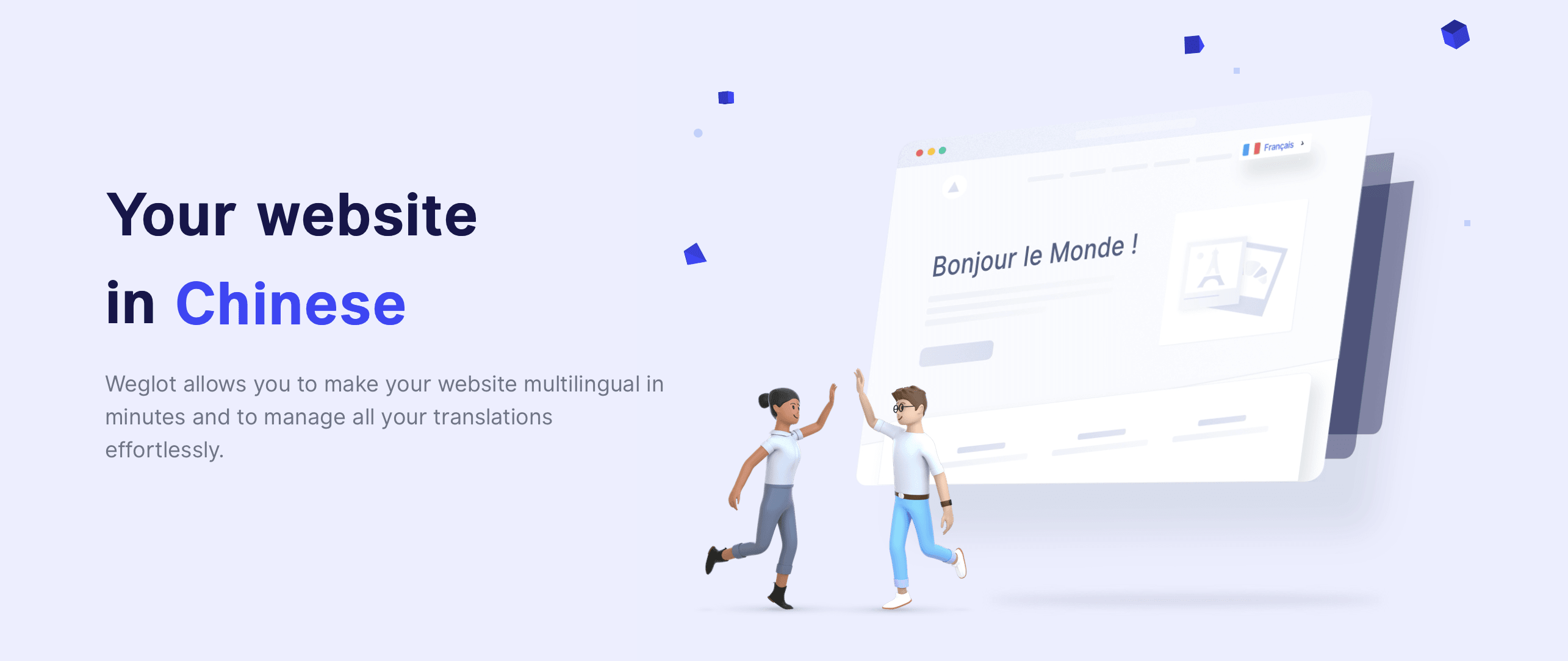Expanding Internationally: Localized Content & Multi-Lingual Shopify Stores
Posted on
Here we come to the most obvious challenge of entering into foreign markets for eCommerce merchants.
Of all the barriers involved in taking the international plunge, the most important for lead generation is to adapt your site content.
However, there are domains and legalities to think about before creating country-specific content with international SEO.
If your audience cannot understand a word on your landing page, it’s unlikely that they’re going to convert. And even if they do, 72% of consumers are more likely to commit to a purchase if the content is in their native tongue.
So here’s what you need to know to get your content ready for your new market with a professional flair.
Overcoming language barriers in Digital Commerce
When living in an English speaking country, it’s all too easy for us to assume that everywhere speaks English. 1.5 billion people can speak English, but only 360 million consider it to be their native language. But just because someone understands the language doesn’t get you off the leash.
Take Europe for example, a continent with 60 indigenous languages. In an EU survey, only 18% of customers have bought in a foreign language. Compare that with the 51% of Europeans that can speak English.
So you can see here how creating content which hasn’t been adjusted for customers’ linguistic preferences creates a block in the sales funnel. A lot of this has to do with the way that we digest content these days.
Setting up individual domains for translated sites
Hopefully, from the knowledge gathered in article three, you’ll be excited to have a subdomain for each language under your market strategy.
Having a different site for, let’s say, your Italian speakers is a must for boosting your SEO in www.google.it. We’ll also show you different tactics for introducing your brand to a new language and how to give your site the best chance of making a maximum impact!
If you’ve followed along our article series, you’ll know that we don’t recommend that merchants use automatic translation apps. You can integrate an automatic translation app into your site from your existing Shopify store, like Google Translate, but you’ll be sacrificing quality and running a higher risk of translation errors.
When growing internationally, it’s a great idea to set up duplicate stores for each country in your expansion strategy.
You can easily set up an additional store with Shopify, or if you’re using Shopify Plus you will already have ten stores available to you.
Translating from English: doesn’t everyone understand it?
As you’ll already know from your online store, people don’t languish over a website the way people once did with the Sunday paper. It’s all about the skim read. And it’s a lot harder to skim read in a foreign language. It’s also a lot more effort, which makes the UX jagged rather than streamlined.
Before launching in a foreign territory, you’re giving yourself the best start by converting your site into the native tongue. The process all of a sudden becomes much smoother for the customer. People prefer to purchase in their native language, and that’s 80% of the global market that has a different native language than English.
And even if your market is predominantly English-speaking, it doesn’t necessarily mean that you can get away with a single site.
It’s not a clear-cut decision on whether there’s significant ROI in creating sites for English variations. However, this article helps to explain the pros and cons of doing so. It also does a good job in explaining why it’s more than just the spelling of grey/gray that signifies the form of English used and why this is important for your UX.
Which leads us on to…

Using multilingual Shopify stores
As we’ve already mentioned, converting your store into a wonderland for different cultures and their languages is not a simple fix. But the effort put in now will put you in a great position for when you launch. And the first thing we advise our clients is to avoid AI translation if they can at all, no matter what the multilingual apps promise to achieve for your site.
We’ve seen sites from incoming clients with paragraphs of text that don’t make a whole lot of sense. It reduces the impact of all the exciting, innovative elements on your site when the copy is disjointed.
So where to next?
Manual translation is the way forward.
Can’t afford to hire a human translator? If resources don’t stretch to include a decent translator, your other option, of course, is to turn to technology.
Using a reputable translation service to translate all of your content is your best best. Gengo is a leader in this field.
Professional translation apps can alter your website pages but also all communication that your customers will receive when placing an order (order notifications). And although they won’t be able to motor over every language speed bump, it is definitely a step up from a non-native site.
Once your content has been translated, you should ideally have them reviewed by a third party to ensure the translation matches your brand’s tone of voice.
Adding translations to your Shopify Stores
Your lead may not hold an international company, especially a smaller one, to have a site tailored to them. However, you’re going to impress them and connect better when you communicate through their native language; it’s a doorway to their identity and cultural background.
Going above and beyond to provide excellent customer service is how you’re going to make it overseas.
It’s how you're going to turn customers in new territories into brand ambassadors, it’s how you’re going to create waves. Shopify apps like Panda, Langify and Weglot will help with this. Start with the languages that you’ll need for phase one.

Adapt your content to suit cultural expectations
The Japanese market has high customer service expectations. When Westerners travel to Japan, they’re blown away by their courteous manner. So, if you plan on entering this market, you may find that the customer service you provide for this market would be seen as excessive for your domestic market.
And that’s to be expected.
The key is to maintain your message but deliver it in a culture-friendly way.
It’s a massive misconception is that once you go global, you need to tone down your brand value so that they flow into different countries. But that just washes out your business and does nothing to help you to stand out from the crowd.
You need to be building genuine connections, and that means to be bold with your brand. Encourage your brand’s personality to flourish.
Multilingual customer support
Along with translation, it’s essential to have a friendly face to your business in your new market.

So how do you set up customer support in a foreign language?
Fortunately, the trend of customer self-service will work in your favour. 75% of respondents in a survey said that self-service is a convenient way to iron out and resolve any issues. however, there are still 40% of customers who contact customer service if they can’t find the information they seek in your knowledge base.
If you can allocate a portion of your international expansion budget to a multilingual customer service team, then you’re giving your business a great chance in this new terrain. You’ll also be able to receive feedback from customer support about the pain-points of your customers and also what’s working well.
You’re placing your ear to your market’s buying behaviors and preferences. Over time, you’ll create a dynamic presence in this market that listens and responds to your customers’ desires.
In essence, hiring a translator is our top recommendation, followed by creating culturally appropriate content that ignites interest in your new market. If you need help from Shopify experts, then our Elkfox contact page is where we can get the ball rolling for you.
